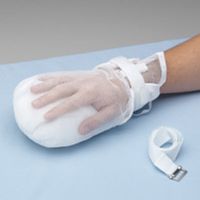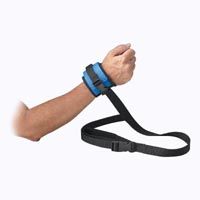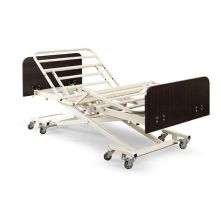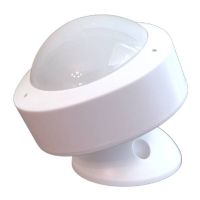 Written by Heather Collins, MSN, RN, CNOR
Written by Heather Collins, MSN, RN, CNOR
Patient restraints are a highly debated topic in healthcare, with concerns over patient autonomy and dignity often clashing with the need for safety and harm prevention. A recent study reported that 43% of restraint use was related to fall prevention, followed by confusion or delirious behavior. While using restraints may be necessary for certain situations to prevent harm to the patient or others, it can also infringe on their personal freedoms and be emotionally challenging for healthcare providers and caregivers. As such, it is crucial to understand the proper use of patient restraints and when alternative preventative methods may be more appropriate. Whether you are a healthcare provider, nurse, or concerned family member, learning about the types and appropriate use of restraints can help ensure the safety and well-being of patients and loved ones.
 | Posey Double-Security Mitts View Product |
Healthcare providers must carefully consider the use of patient restraints. While restraints may be necessary for emergencies to ensure patient and staff safety, they should only be used as a last resort. Situations where restraints may be required include preventing falls, stopping patients from removing vital tubes or lines, or preventing self-harm or harm to others.
It is critical to understand that restraints should be used for the shortest time possible to ensure patient comfort, dignity, and staff safety. In hospitals and licensed healthcare facilities, restraints require a physician's order and regular monitoring to ensure safety. Restraints should not replace appropriate supervision and care. Healthcare providers should continuously monitor the patient's condition to determine when it is appropriate to use or remove them.
As healthcare providers, our ethical responsibility is to ensure the patient's safety and well-being. Therefore, we must be guided by the principle of doing no harm when using restraints. By documenting the reasons for restraint use and regularly reviewing the patient's progress, healthcare providers can ensure that restraints are used appropriately and only when necessary.
Recommended: Posey Double-Security Mitts
 | Posey Quick-Release T-A-T Cuff View Product |
Ensuring patient safety while maintaining their dignity and well-being is essential when using patient restraints. To properly use restraints, healthcare providers must follow some general guidelines. First and foremost, restraints should never be used as a punishment but only for safety reasons. Furthermore, healthcare providers must ensure that restraints do not cause any harm to the patient. Restraints should only restrict movements that endanger the patient or others while still allowing access to basic needs like food, water, and the bathroom. To ensure the safe and effective use of the restraint, it is also critical to follow the specific instructions provided with the product. Finally, healthcare providers must be ready to remove restraints as soon as it is safe. By adhering to these guidelines, healthcare providers can properly use patient restraints, maximize patient safety, and minimize any negative effects on patient wellbeing.
Recommended: Posey Quick-Release T-A-T Cuff
Patient restraints may be necessary for certain situations, but they are far from the ideal approach to managing patient safety. Instead of relying on restraints, healthcare providers can take a proactive approach by implementing preventative alternative methods to minimize the risk of situations that necessitate their use. From low beds and concave mattresses to patient monitoring systems and destimulated environments, there are numerous methods that healthcare providers can use to provide safe and effective care while minimizing the use of restraints.
 | Medacure Long Term Care Ultra Low Beds View Product |
Low beds and concave mattresses offer a revolutionary alternative for ensuring patient safety without compromising their autonomy and comfort. When patients risk falling or injuring themselves, these innovative alternatives provide a secure and supportive sleeping surface that significantly reduces the risk of harm. Furthermore, patients can enjoy enhanced comfort and improved sleep quality, leading to better outcomes and overall well-being. Using low beds and concave mattresses also helps healthcare providers prioritize patient safety, as they reduce the need for restrictive restraints and constant monitoring.
Recommended: Ultra Low Bed Electric Hospital Bed
 | Smart Sensor Senior Medical Alert System with Fall Detection | Elderly Monitoring with No Monthly Fee View Product |
Patient monitoring systems offer a proactive and effective solution for ensuring patient safety without resorting to restraints. These systems, including bed, door, and personal alarms, provide timely alerts to caregivers when a patient is at risk of harm. Patient monitoring systems play a vital role in safe patient care and early intervention by enabling healthcare providers to monitor patients even when they're not physically present. Healthcare providers can prevent falls and other potential injuries with patient monitoring systems while maintaining patient autonomy and dignity.
Recommended: Smart Sensor Patient Monitoring Motion Detector by Smart Alert Tech
Creating a destimulated environment is a key strategy for keeping patients calm and comfortable during treatment while avoiding restraints. Destimulation involves tactics like reducing clutter, minimizing noise and light, and limiting the number of people interacting with the patient. Patients are more likely to feel at ease and less anxious by providing a calm, peaceful environment with minimal distractions. This, in turn, can reduce the need for restraints and promote a positive experience for the patient. By prioritizing destimulation tactics, healthcare providers can improve patient outcomes and ensure a higher quality of care for their patients.
It is critical in healthcare to strike a delicate balance between patient safety and personal dignity. Adopting alternatives to patient restraints can improve the patient experience while ensuring their and the healthcare team's safety. Healthcare providers can reduce restraint use and create a more nurturing and supportive environment by incorporating innovative preventative alternatives. If restraints are deemed necessary, it is critical to understand how to use them correctly and in the least restrictive manner possible - tailored to the patient's condition.
Visit our category page to learn about various restraint products from well-known vendors. Additionally, explore Caregiver University for helpful insights that can assist healthcare providers, nurses, and family members in creating a safer and more comfortable environment for patients and loved ones.

Heather Collins, MSN, RN, CNOR
Heather is a registered nurse and freelance health writer with a Master's degree and over 24 years of nursing and leadership experience. Heather cares for patients of all ages in various healthcare settings, including inpatient acute care nursing, GI procedural nursing, cardiac lab, infertility clinics, pediatrics, and surgical services. Heather is dedicated to providing high-quality care and sharing reliable, evidence-based information that empowers people to make informed decisions about their and their loved ones' health.